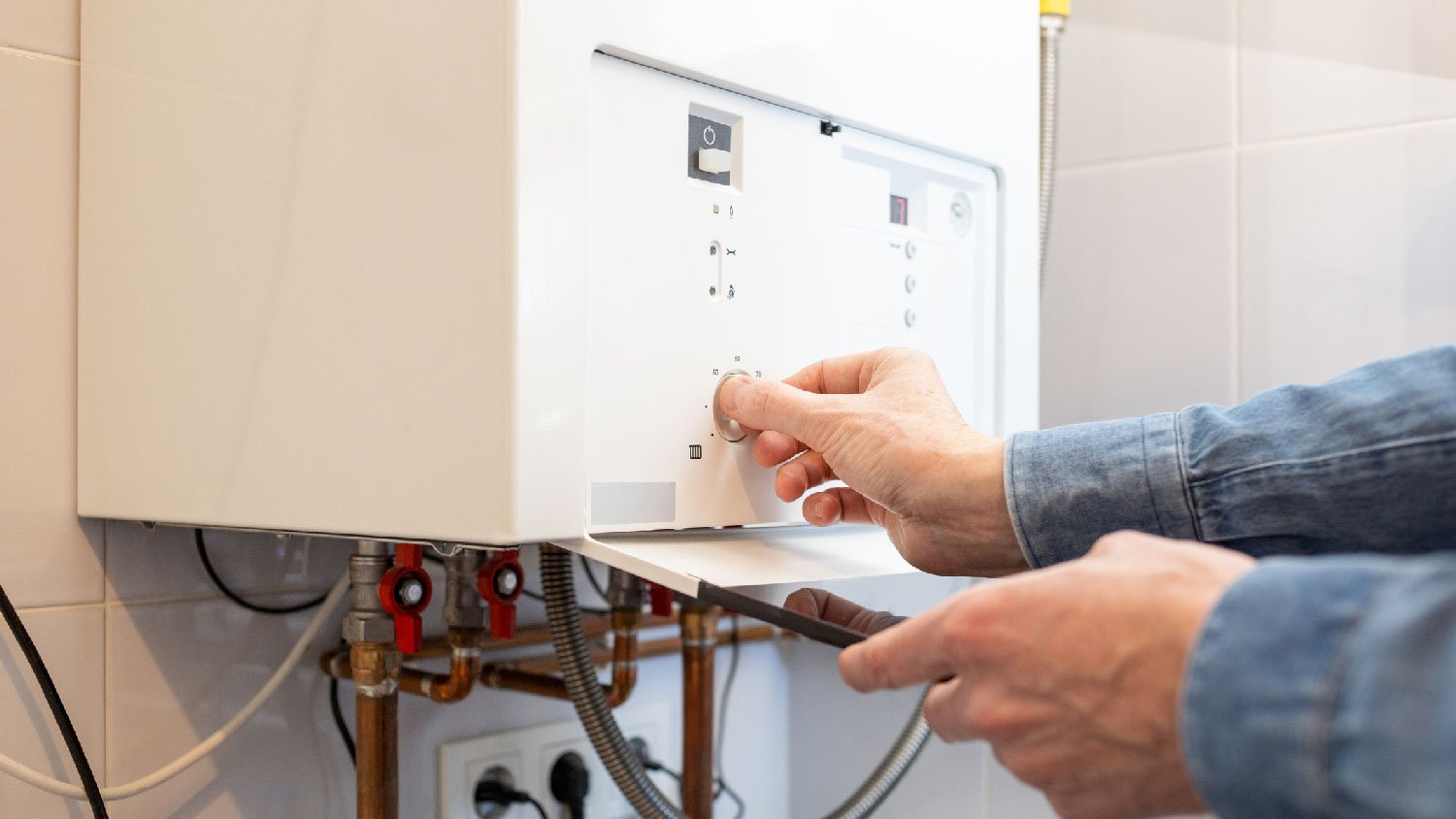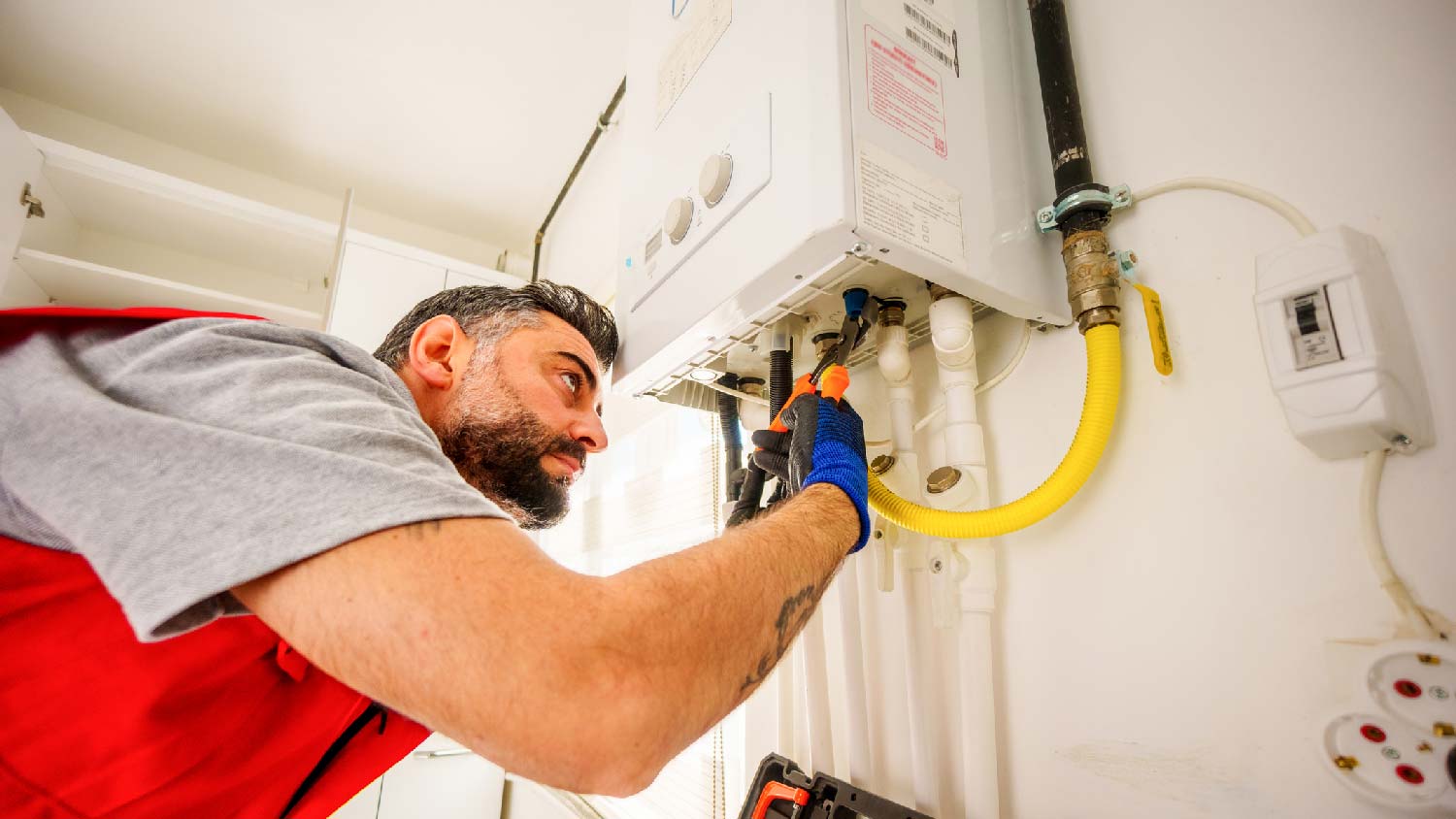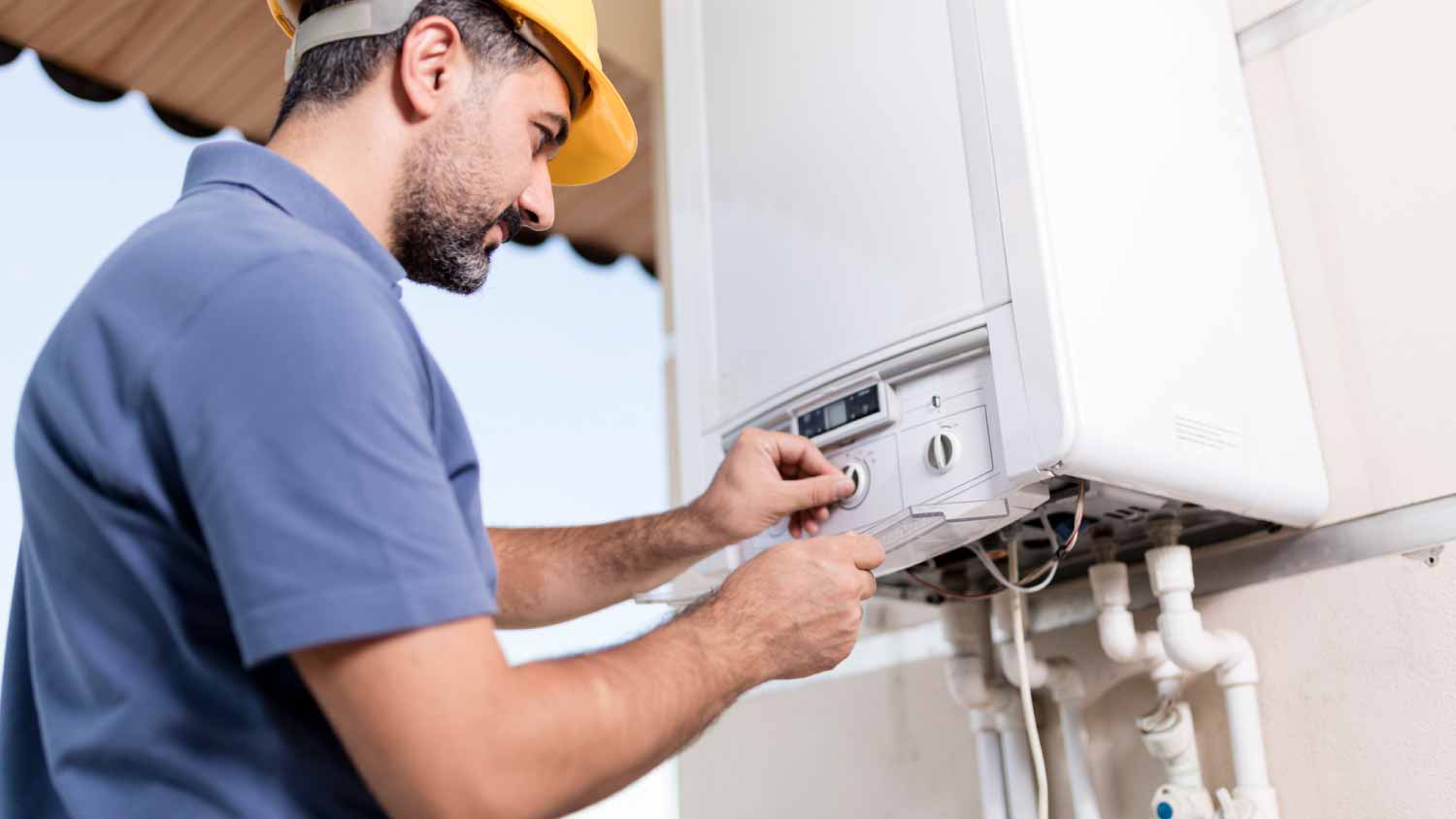Gas Water Heater Not Lighting? 5 Potential Causes and Solutions
Here’s how to stay out of the dark when the pilot light lets you down


Dirty or clogged pilot tubes and igniters are common issues behind a gas heater that won’t light.
Issues that can’t be DIYed include replacing a faulty thermocouple or gas tube.
Working with gas is inherently risky, so always defer to a pro when in doubt.
Gas water heater not lighting? When the pilot light doesn’t ignite, odds are you know you’re in for a cold shower, but you may be less familiar with what causes a problem like this. The good news is that many potential culprits are easy and inexpensive to solve, but knowing where the issues stem will help you determine if it’s a DIYable repair or one that needs a pro.
This guide will walk you through the most common issues and their fixes when it comes to a gas water heater that’s not working, plus how to keep it in tip-top shape for the long haul.
1. Dirty or Clogged Pilot Tube
Dirt and dust are likely to build up in all kinds of enclosed spaces including in a gas water heater, which is why this is among the most common reasons it can fail to light up. Over time, this debris will clog the pilot tube and partially or completely block its access to the gas flow, in turn preventing it from alighting.
How to Fix It
This is both the most likely reason your gas water heater isn’t lighting and the easiest issue to fix on your own. Take the following steps to restore it to working order.
Shut off the gas valve and water heater as a whole to avoid risks.
Locate the pilot tube under the front panel and remove it.
Repeatedly insert a thin needle or pipe cleaner into the opening of the pilot tube to remove debris.
Examine the tube for damage. If it has holes along its length or is damaged at the opening, it will need to be replaced.
Once clean, reattach it to the heater and ensure that it is properly secured.
Smell for gas. If a pilot light isn’t lighting, but the gas is still flowing, it can build up and form residual gas in your unit. You’ll need to let this clear out first to avoid problems, which can take anywhere from several minutes to a couple hours. If you’ve let it sit for a while and detect no odors, you’re in the clear. If it’s still not lighting, further cleaning may be necessary, or you could have another problem on your hands.
2. Broken or Dirty Igniter
The automatic igniter in a gas water heater is responsible for lighting the gas to produce a flame. These, too, can wear out over time—just think of the igniter on your stove or grill and how sometimes it fails. You can learn how to light a water heater manually, but the better course of action is to replace it entirely so you don’t have to go to the extra work of starting it up every time you take a shower.
How to Fix It
Here’s what you need to do to determine if your igniter is dirty or needs a replacement.
Before replacing the igniter, verify that it’s not simply dirty or blocked by cleaning it with a slightly damp tooth or paintbrush. Let the igniter dry for several minutes then test. Proceed to the next step if it’s still not working.
Some igniters in gas water heaters are battery-powered, so you’ll also want to replace the batteries to ensure that’s not what’s causing the issue.
If it’s still not working, double-check that all connections are secure. Then, use a screwdriver or wrench to tighten all hinges and connections.
If none of that solves your problem, hire a pro who fixes water heaters in your area to replace your igniter.
3. Bad Thermocouple

A thermocouple is a series of two wires made from different metals that connects the pilot light to the gas valve. When a gas water heater is activated, the pilot light heats up, and this feature detects that increase in temperature and enables gas flow to light up the unit. If the thermocouple is faulty or damaged, it won’t be able to do this job, and your pilot light will fail to ignite as a result.
How to Fix It
You’ll also want to verify that this feature isn’t dirty or otherwise compromised to determine if a replacement is really necessary.
Shut off the gas valve and the water heater and remove the front panel to access the thermocouple.
Remove the thermocouple, gently clean it with sandpaper or steel wool, and assess any damages.
Reconnect the thermocouple and test your system. If it’s still not working, it may be damaged in ways only a professional could spot, so you’ll need to hire a water heater repair person near you to take a look.
4. Damaged Gas Tube
If the tube that supplies gas to your water heater is dented or damaged, the amount of gas that reaches your pilot light may never be sufficient to actually ignite it—and what does make it inside of your unit may be allowed to build up to hazardous amounts.
How to Fix It
Though it may seem like a simple fix, experts don’t recommend repairing or replacing a gas tube on your own. If you notice dents, cracks, or holes in yours, hiring a pro to make a fix or replacement is the only way to fully avoid associated risks.
5. Worn Out Control Valve
Nothing lasts forever, and that includes gas water heaters. Eventually, the control valve which allows gas to access the pilot light will be too worn out to function properly, at which point you’ll need to start budgeting for the costs of water heater repairs or a full replacement.
How to Fix It
This is not something you can repair yourself, so hire a pro to determine whether it’s possible to repair or if your unit as a whole will need to be replaced—which would be good news, since water heater gas valve replacements cost less than swapping out your heater entirely.
5 Signs of a Broken Gas Water Heater
Aside from a pilot light not igniting, these are the other signs of a gas water heater that needs to be tended to.
No or little hot water: If you’ve cleaned all features and secured all connections pertaining to a pilot light, but your temp is still off, you may need a complete system overhaul.
Strange noises: A little noise is normal with a working water heater, but sounds you should never hear include popping, cracking, banging or rumbling.
Low water pressure: Though this can be a symptom of a number of other issues, it’s also associated with sediment build up in water heaters.
Old age: Water heaters aren’t built to last forever, so you can expect them to stop working when they’re slightly or well past their age limit.
Water is malodorous or discolored: Water that smells or is tinted slightly red is a sign of a damaged anode rod, the element that’s responsible for preventing corrosion.
When to Call a Pro
Working with gas is inherently risky, and a job done without the right tools or know-how can put your unit, home, and yourself at risk. Quick cleanings are fine for the average homeowner to do, but greater repairs or replacements should always be left to a water heater repair pro near you.
How to Prevent a Broken Gas Water Heater

Take these maintenance steps to keep your pilot light and heater at large in good condition.
Drain and flush tank annually: Doing this removes sediment and keeps the unit running smoothly.
Plan regular inspections: Aim to have a pro look at your unit once a year or whenever issues arise.
Keep its age in mind: Note when you purchased your water heater so you’ll know in advance when it needs to be replaced.
Keep the area around it clear: Avoid placing a water heater in a cramped space to allow any residual gas to easily disperse.
Repair or replace broken or faulty parts as necessary: Don’t wait to make water heater repairs, as the longer an issue goes unchecked the worse it can become.
Frequently Asked Questions
Gas water heaters last between eight and 12 years on average. You can help them reach their maximum lifespan with regular cleanings, maintenance, and professional checkups, though don’t hesitate to swing for a full replacement if the total cost of repairs is greater than that of purchasing and installing a new unit.
The cost to install a new water heater depends on the type and its size, but homeowners pay between $900 and $1,800 on average. By contrast, you’ll pay much less for certain repairs, like replacing a broken gas valve, which costs between $150 and $550 on average.















